There are several Hill Tribes in Thailand, mostly in north Thailand. These Thai villages can be visited by tourists, and it is possible to arrange overnight stays in Hill Tribe villages.
20 years ago I took an extended trek in Northern Thailand staying in various Hill Tribe villages in the Mae Hon Song area. This year, we re-visited to see what had changed.
Back then we weren’t just staying in the villages in quickly banged up tourist lodgings, we were staying in the villagers’ homes.
We carried our own sleeping mats, bags and mosquito nets and slept on wood and bamboo floors, sometimes on raised sleeping platforms, under bamboo or leaf roofs.
Every morning we woke to the sound of rice pounding and the daily roosters’ alarm calls. We ate, packed up and trekked through jungle to the next village.
It was a fantastic experience and something I wanted to give the kids a taste of.
We didn’t have the option of an extended trek with the kids, we had no gear with us. I remember the biting insects being fierce and the thick jungle heat intense. The kids would have complained.
They would have complained a lot.
The walking they’re fine with, they handled Everest like troopers but bugs and heat, no. Let’s keep this real!
Also, Chef and I took a trek out of Chiang Mai some years after my first experience, it was sadly disappointing and we didn’t see the real villages at all. Now we’re wary of booking such tours.
The Hill Tribes of Thailand
This year we wanted to introduce the kids to the idea of the Hill Tribes, give them a taste of what they’re all about, explain some of the history and traditions and hopefully, let them visit a village or two.
Most of you will know that we live for some of the year in a remote village in Romania. Our village is often described as the last peasant culture in Europe.
I wanted the kids to see the similarities, the use of local materials in constructing homes, subsistence farming, vital traditional skills, adaptation to environment and strong cultural significance.
During that first trek we stayed in Lisu, Lahu, White Karen, Shan, Hmong and a few more villages. I’ve lost all the names to the fog of age.
I believe my friends stayed with the Akha on the last night, I’d gone on ahead with a sick member of the group to enjoy hotel comfort and running water (no toilets and being on first name terms with every spider in the jungle wasn’t too great with a fever and tummy trouble).
So the real Akha, I never met, sadly. The villages I remember from that trip were very similar to those in Caz’s pictures of an Akha settlement.
As we drove over the mountain from Pai to Mae Hong Son admiring the stunning yellow Bua Tong in full bloom, I started to get a feeling I’d seen this stretch of road before.
I spotted a simple wooded bus stop and asked Chef to take a right down the hill, into a village. It looked familiar. I remembered a pond with lotus flowers in the centre of the village, we turned a corner and there it was just as I remembered. The Lisu village I’d stayed in 20 years ago.
It was largely as it was, a little more concrete and corrugated iron, but mostly the same. Women in Lisu costume strolled the village, chicks and piglets foraged at the roadside.
I couldn’t believe I was back in the same place.
We drove on to Mae Hong Son determined to find more Hill Tribes for the kids.
At the night market by the lake, the Lisu were out in force selling traditional-style tourist souvenirs. Yet another hat to add to our collection, and a friendly chat with the vendor.

The kids’ first contact with “Hill Tribes” came in Bangkok, these women, wandering street traders, sport headwear typical of the Akha Tribe. Are they Akha? I have no idea, it doesn’t matter, They’re more than happy to sell their head-gear, but it’s a quick introduction to one of Thailand’s tribes and the idea of being distinguished as being of a particular tribe through appearance.
I’ve read stories of these women being forced out of their tribal lands by deforestation, heading to the cities to make a living under terrible conditions.
I don’t know the truth and I doubt you do either.
These women are always friendly, loads of fun, great makers of memories. That is what we see as tourists. We talk, smile and buy another over-priced hat or a toy for the kids.
In Chiang Mai we chanced upon the (free) Hill Tribe Museum and Education Centre. I shared images and video clips on Facebook and Instagram of the kids watching educational videos like good little worldschoolers.
They did watch with interest, they did enjoy the museum and learned a little of the tribes and their origins.
In Mae Hon Song we took a leap into the unknown. That trek 20 years ago didn’t take us to a Long Neck Karen village deeming it too controversial, but we had seen traditionally attired women on the streets and in the markets of Mae Hon Song.
I knew they were “real” just going about their daily lives, not dressed up and wearing their rings for the tourists. I would never take a tour or go with a group, I hate that human zoo feeling we got in India while travelling with a group of gawkers.
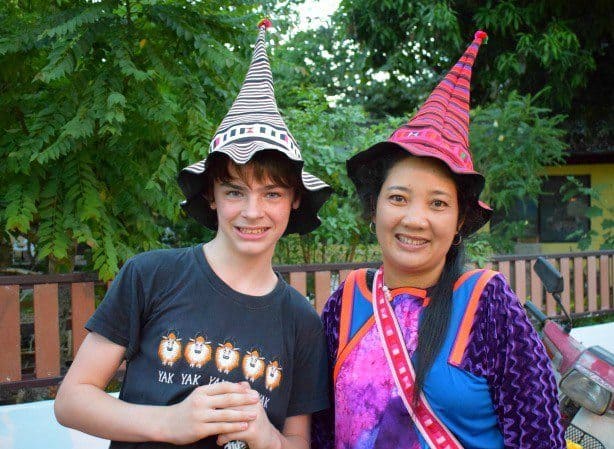
If we go somewhere sensitive, we go alone and we go with respect. We will see it for ourselves and make a call based on what we find. I don’t know everything, I never pretend to, but I can tell you about our personal experience.
What little information we could find online told us that there were various Long Neck Karen villages and attractions in the area. Even in Pai there are ” Long Neck in Pai” cafés, we didn’t investigate further.
I’m calling them Long Neck Karen to distinguish them from other Karen groups, not all Karen wear the famous rings.
We found that somewhere near Mae Hong Son was some sort of Long Neck Karen tourist village, a place that charged admission and where the women just come for the day.
It’s their job, they come, have their photos taken and leave.
We didn’t want that, we wanted to try to find a real village without crowds of tourists. Our visit was as much about finding a real village for the kids to see, as it was about the women’s outfits.
Little Boo finds the Long Necks “creepy”, I wanted him to see that they are regular people, just like us.
After more or less giving up on our online search for a village, the owner of our guest house gave us a map with a village clearly marked. Sometimes (most times) it’s better to just ask a local rather than the internet.
So we set off in our little hire car, the GPS leading us the nearest town, which after about an hour, we found. But here’s where it got tricky, the road ran out, dissolving into mud, ruts, and potholes with still 6 Km to go to the village.
The Nissan was never going to make it and we wished we had our old Romanian truck with us, so we kind of stopped and thought about it a bit. James walked on to look at the road and came back shaking his head. No go.
At that moment scooter guy appeared.
“I take you Long Neck Village, I have taxi.”
OK, that sounded reasonable. He showed us where to park our car under a mango tree and disappeared for 10 minutes leaving us wondering.
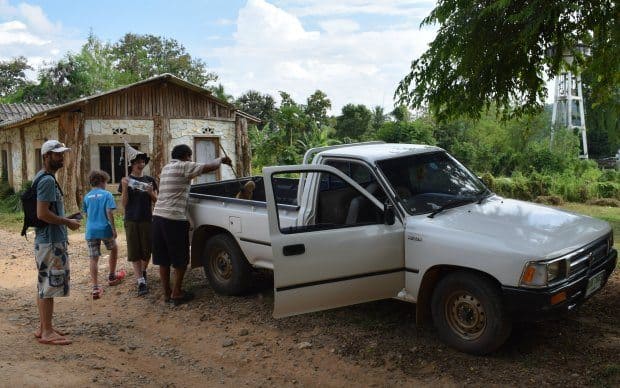
No problem, back he came with a pick up truck, swept out the back, put down a clean mat and motioned for us to get in. D called shotgun, we 3 bounced around in the back past rice fields, bamboo, a refugee camp and lush forest before the road opened onto the Long Neck Karen village just a stone’s throw from the Burmese border.
The Long Neck Karen Village
It was a typical Hill Tribe Village. Wooden buildings, leaf thatched roofs, dirt paths with a variously sized bunch of long-legged chickens scratching about.
There were no other tourists.
At the beginning of the village there was a small village shop, I’ve seen these in every village I’ve visited. As we walked along the central path 3 women had stalls set up selling trinkets.
2 women were weaving, one just sitting chatting to a neighbour, all were wearing the traditional rings.
We greeted them and walked on through the village, it was more or less deserted. We could hear excited children’s chatter coming from the school, the health centre next door was locked up, the village football kit was drying outside a nearby house.
This village is home to just 20 families, around 104 people, all migrants from Burma.
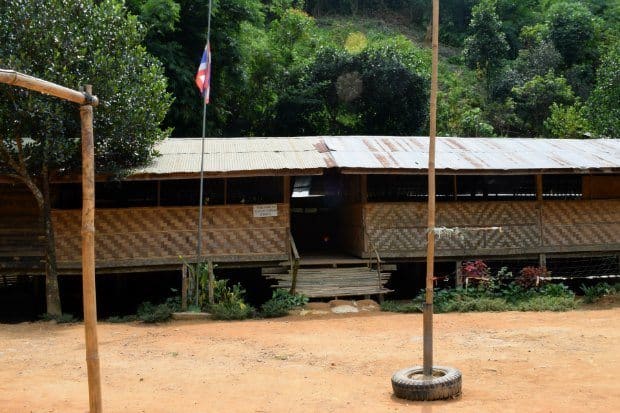
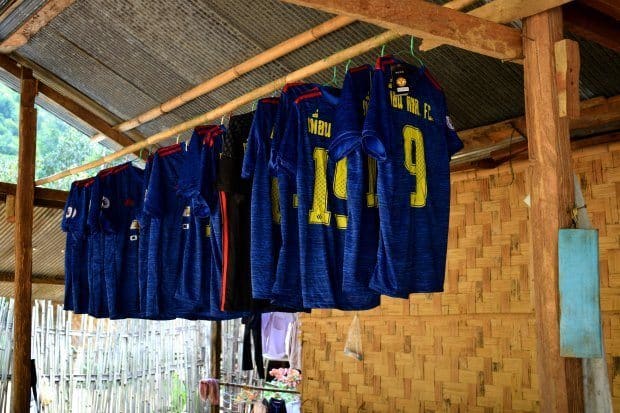
Read other travellers’ experiences, ethics, justification and why you should, or should not, visit Long Neck Karen villages here.
- Ethical Travel: Should You Visit Thailand’s Long Neck Villages
- A Visit to the Long Neck Hilltop Village (page no longer available)
- Thai Hill Tribes: Is It Ethical to Visit
- Fair Tourism and The Kayan (from a local non-profit, seeking to help the Kayan)
We looked, we saw, we took photos with permission. We thought it only fair to buy something from the women. Our tourist dollar went straight in their pockets, where it belonged.
We felt the experience was great, but of course, others will disagree. This is a very small-scale political hot potato. We read up on it and chose to go.
To show our children and to show you, because that is my job as a worldschooling facilitator.
Hopefully we’ll have time to visit more Hill Tribes while we’re here but our few weeks in Thailand are disappearing fast.
We’re socialising a lot, we’ve been recognised almost every day here, the boys have made friends and now the festival is upon us.
I’ll just finish by telling you that we’re incredibly glad we picked Thailand for this trip, delighted to be here for maybe the 20th time and able to have a good poke about and visit places we’ve missed on other trips. It’s been good, very good, for us and the kids.
For you for Pinterest.
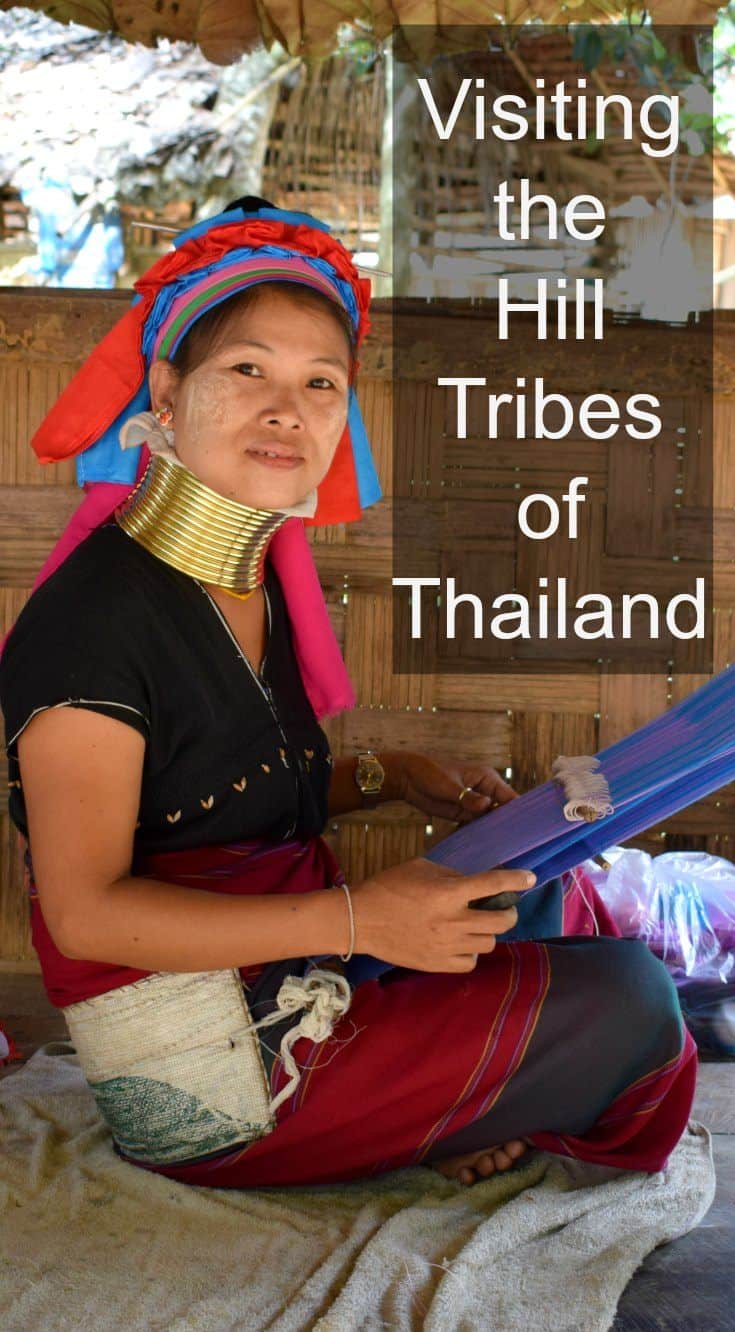
Back to our main Thailand Travel page
If you'd like to hire a car during your stay, use this car rental comparison tool to find the best deal!
We also suggest you take a look at this company to get a quote for all kinds of the more tricky adventure or extended travel insurance.
Try Stayz / VRBO for an alternative way to find rentals on homes/apartments/condos in any country!

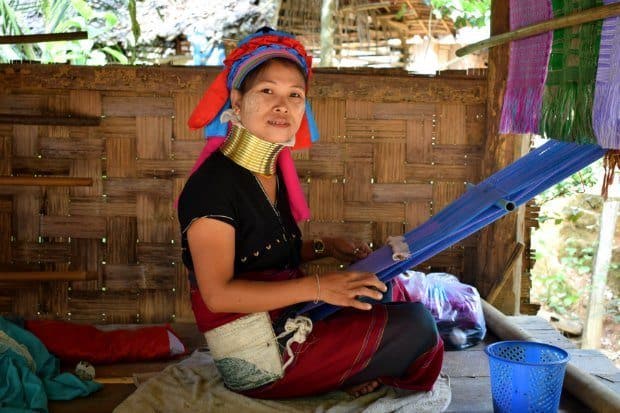
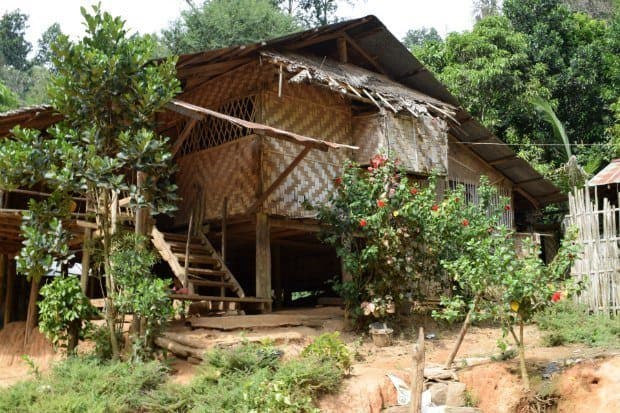
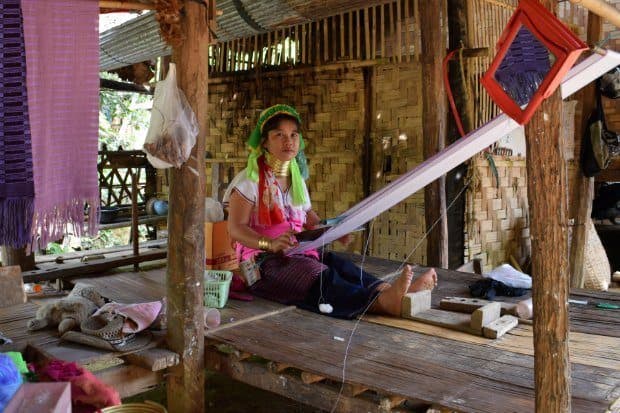
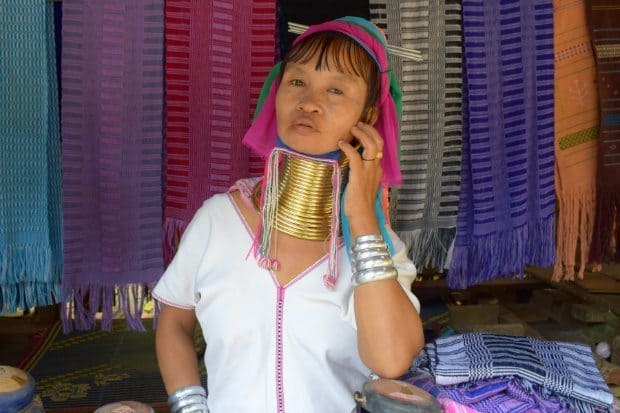
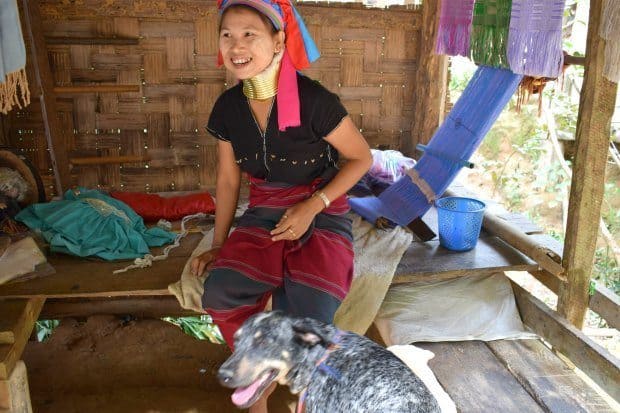
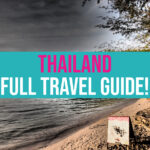
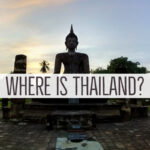
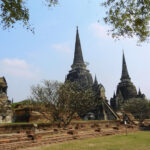
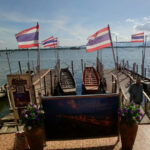
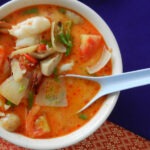


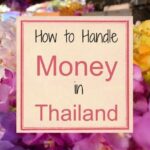
Hi, love your blog- it’s a go to for research for us as we plan a year long trip around the globe with our 3 and 6 year old girls.
This sounds magical. Did your kids take anti-malarials when in Northern Thailand? I’m so conflicted about this and would love your insight and experience?
Thank you 🙂
Corinda
No, we haven’t taken any malaria prophylaxis in the last 20 years Corinda. This part of Thailand, on the Burmese border, was where you used to have to take them for, so you have a fair point. If we were trekking in this part of Thailand and staying in villages for a few days I’d think about it. But staying in hotels, travelling by car, using mosquito repelent, we didn’t think it necessary. But check the mararia map, this region of Thailand may be clear to low risk now, most of South East Asia ( the parts tourists visit particularly) is low-free from malaria now.
Hello! My husband and I are looking to have a similar experience when we head to the north of thailand soon. How did you cope with finding accommodation? Did you end up staying with the families, or did you need to book accommodation in Mae Hon Son and then visit the tribes during the days? Thanks for your help 🙂
We just booked hotels and guest houses using the typical booking sites mentioned.
That sounds indeed like a very memorable and interesting experience. We are heading in that direction during the next few days, any chance that you could tell me the location of the village you visited?
I can’t remember Fran. Pick up a map locally and ask around.
very interesting post.. the pictures sure look out of this world.. I wonder how much pain these women endure for this neck elongation thing
I don’t think there’s any pain Prasad. Their necks aren’t elongated, the rings just push their shoulder bones down, it’s an optical illusion. I’ve read elsewhere that they take the rings off sometimes, in other posts that they are unable to because the muscles become weak. I really don’t know what to believe but all sorts of people practice body modification, piercing, tattoing, scarification, it’s nothing unusual.
That’s really great you were able to get off the track like that. I had an amazing doctoral student who is Hmong (one of the smartest guys I’ve worked with and he didn’t learn English or how to read until he was about 12 due to living in refugee camps) and he and I have done research together and published work on Hmong integration into US culture. So when we were in Chiang Mai we tried to get to Hmong villages but found out too soon that they were sadly only the tourist ones and quite depressing. Next time I need to do better research and stay longer:) Thanks for offering insights AND being responsible tourists.
Wow, what an amazing trip you’ve had, so far (as always!) I am not aware of the controversy you speak of, but am delighted to be able to learn more by traveling along with you all and I’ll definitely be reading up on it further! These posts have been so appropriate to read this month, because Thailand is where we’re “traveling” to for our “Passport to Fun” trip this month. Reading all your posts has been like an added bonus of really getting to see it! Have a great weekend!